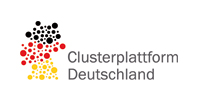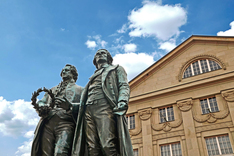Free State of Thuringia
With optics in Jena, Thuringia has a cluster that has grown historically since the 19th century and is internationally significant. For the Free State of Thuringia, the established clusters as well as those under development are important in terms of economic and regional policy, as they promote the growth of value creation and employment.
The goal of Thuringia's cluster policy is to support the networking of companies with each other as well as with research institutions, universities and intermediaries in a targeted manner.
To achieve this, the development of particularly efficient, innovative and supra-regionally visible clusters is being promoted, especially in the specialization fields of the further developed Thuringian innovation strategy. Increasingly, the aim is to drive forward cross-field and cross-cluster topics, especially those relevant to innovation (cross-clustering). From the multitude of topics and activities as well as on the basis of the specialization profiles in the specialization fields, highlights are to be identified which can be developed and built up into value-added networks in the sense of cluster policy. The topic-specific cooperation of the clusters across industry boundaries is thus of great importance in their further development, especially from an economic policy perspective.
The specific cluster and network organizations play a central role in cluster development in Thuringia. They bring together business and research in the respective clusters/industries, promote technology transfer and innovations, and contribute to profile building and location development in the Free State. Thus, various business-driven clusters and networks have emerged in Thuringia so far. While some of them have already grown into stable structures over many years, others are still in the early stages of development. The professionalization of these structures must be further strengthened.
Thuringia supports these processes both by providing start-up funding for cluster/network organizations and by promoting the targeted strategic further development of clusters and networks (Directive on the Joint Task "Improvement of the Regional Economic Structure", GRW Directive).
Currently the following are funded as innovation clusters:
- Automotive thuringia, automotive and supply industry
- Medways, medical technology
- OptoNet, optics and photonics
- SmartTex, intelligent textiles
- SpectroNet, Photonics
- ThEEN, Renewable Energies
and as a cooperation network:
- ITnet, IT industry
- PolymerMat, plastics industry
- Th-ERN, food industry
The Thuringian Cluster Management (ThCM), located at the State Development Corporation of Thuringia (LEG), supports the clusters and networks in many ways. In addition to to the state's funding instruments and advising on strategic development and professionalization, the ThCM supports Thuringian consortia in forming consortia and R&D alliances. Thuringia has been able to implement a large number of projects from the various federal formats such as Zwanzig20, Wachstumskerne, WIR! and RUBIN or to take them into the implementation phase:
Zwanzig20
- 3Dsensation
- InfectControl 2020
Wachstumskerne
- Smood (see Dubai, German Award for Sustainability Projects 2021 etc.)
- TOF - Tailored Optical Fibers
- VIPO - Virtual Product/Process Development and Optimization for SMEs
- SMOOD - SMART NEIGHBORHOOD (livable, efficient and environmentally friendly living quarters)
WIR!
- H2-Well - Hydrogen source and value creation region Main-Elbe-Link
- RCGips - Gypsum recycling as an opportunity for the southern Harz region
- Vogtland pioneers
RUBIN
- QUANTIFISENS - quantum-inspired, omnifunctional fiber sensor systems
- AMI - Advanced Multimodal Imaging
- SAPHIR - advanced ceramics from the TRIDELTA Campus Hermsdorf
Further
- Bauhaus.Mobility.Lab
- Research Campus InfectoGnostics
- Competence Cluster nutriCARD
One goal of the cluster policy is to use these projects specifically to strengthen existing cluster structures or to establish new sustainable cluster structures.
(last update: February 2022)
More information
- Recommend this page:
- Print view

